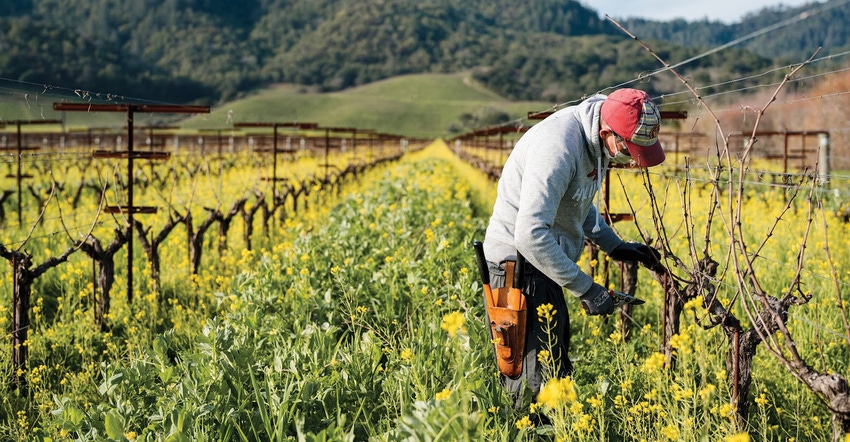
Sustainability has several different definitions, all of which revolve around a central theme of protecting what we currently have to perpetuate it into the future.
Perhaps the United Nations World Commission on Environment and Development defines it best as 'a balance between environment, equity, and economy.' They word it like this --- “Sustainable development is development that meets the needs of the present without compromising the ability of future generations to meet their own needs.”
In essence, the protective measures that are a smart thing to do now may even morph into requirements for the future. That was the feeling of the recently created Napa Green Vineyard program that replaced the Napa Green Land program earlier this year.
“The earlier program was based around erosion control that came out of the mid-2000s when the Napa River was deemed impaired due to sediment from agricultural runoff,” says Ben Mackie, Napa Green’s Climate and Soil Specialist.
“The earlier efforts are now regulatory requirements, so the new program is more robust with a lot more compliance issues on performance.”
The popularity of Napa Green Vineyard is evident with upwards of 15% of the county’s vineyards, over 5,000+ acres in Napa Valley, already on board.
“This is a full, holistic sustainability program looking at all aspects of sustainability, from the environment to social aspects and financial considerations,” Mackie says.
Like the carbon farming process. “We look at ways vineyard systems can capture more carbon, like cover cropping, reducing tillage to no-till, adding compost with biochar.
“One of the first certification elements is environmental in nature, talking about things like irrigation issues and prohibited pesticides to capturing a maximum amount of carbon retrieved within a vineyard system. A lot of the initiatives and elements we include in certification are things we see becoming a compliance requirement in the near future. We’re looking at the issues of today and tomorrow that will possibly go from being the right-thing-to-do to being required down the line.”
Rigorous certification
The term “cutting-edge standards” is applicable here. “It’s the most rigorous vineyard certification globally that we’ve found with over one hundred things needed to comply. And it’s picking up momentum. We’ve had a lot of regional vineyard managers outside our county reaching out to us to be part of the program and we’re looking at methods of expansion to make the certification more relevant to the entire region and state. And we’ve had interest expressed from other winegrowing regions in New York, Virginia, and Canada.”
Napa Green’s Executive Director Anna Brittain says the certification plan consists of actual changes to be implemented by vineyard crews, issues involving things like regenerative farming and climate change and more specifically forest preservation, prohibited pesticides, burning restrictions, carbon farming, water efficiency, and the like.
One of the first vineyards to get on board with certification was one that had already put many of the compliance issues into practice making Sequoia Grove Winery in Santa Rosa an early practitioner of holistic sustainability. “They’ve been a champion all along,” says Mackie.
Don’t be surprised if a member of the Napa Green Vineyard team makes contact because the more people that know and understand the program and its benefits, the faster it will grow to the benefit of the environment and all who participate.
“All of the practices we’re recommending are scientifically relevant and backed by research and they have checkbook wisdom because with the costs of items like water, energy, and fertilizer doubling and tripling over last year, adherence to green vineyard protocol is relevant to a growers bottom line.”
About the Author(s)
You May Also Like




